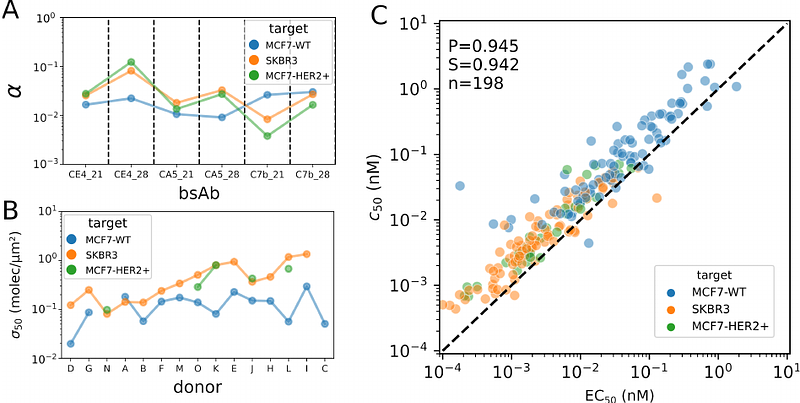Decoupling individual host response and immune cell engager cytotoxic potency

Decoupling individual host response and immune cell engager cytotoxic potency
Limozin, L.; Gonzalez Gutierrez, C.; Aimard, A.; Pelicot-Biarnes, M.; Kerfelec, B.; Puech, P.-H.; Robert, P.; Piazza, F.; Chames, P.
AbstractImmune cell engagers are molecular agents, usually antibody-based constructs, engineered to recruit immune cells against cancer cells and kill them. They represent a versatile and powerful tool for cancer immunotherapy. Despite the multiplication of new engagers tested and accepted in the clinics, how molecular and cellular parameters influence their action is poorly understood. In particular, disentangling the respective role of host immune cells and engager biophysical characteristics is needed to improve their design and efficiency. Focusing here on harnessing antibody dependent Natural Killer cell cytotoxicity, we measure the efficiency of 6 original bispecific antibodies (bsAb), associating an anti-HER2 nanobody and an anti-CD16 nanobody. In vitro cytotoxicity data using primary human NK cells on different target cell lines exposing different antigen densities were collected, exhibiting a wide range of bsAb dose response. In order to rationalize our observations, we introduce a simple multiscale model, postulating that the density of bsAb bridging the two cells is the main parameter triggering the cytotoxic response. We introduce two new microscopic parameters: the surface cooperativity describing bsAb affinity at the bridging step and the threshold of bridge density determining the donor-dependent response. Both parameters permit to rank Abs and donors and to predict bsAb potency as a function of antibodies bulk affinities and receptor surface densities on cells. Our approach thus provides a general way to decouple donor response from immune engagers characteristics, rationalizing the landscape of molecule design.


